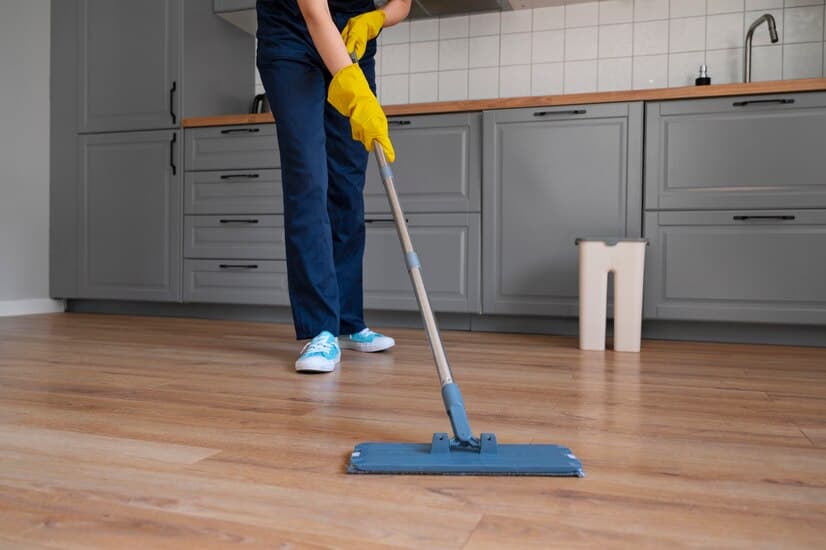When it comes to maintaining a clean and inviting environment, the floors often receive less attention than they deserve. While routine cleaning may keep the surface dirt and grime at bay, deep floor cleaning is essential for achieving that pristine appearance and ensuring the longevity of your flooring. This comprehensive process goes beyond the typical sweep and mop routine, delving deep into the fibers and structures of various floor types, from hardwood to tile and carpet.
The Importance of Deep Floor Cleaning
Deep floor cleaning is not simply an aesthetic choice; it is a vital aspect of maintaining a healthy and hygienic space. Over time, dirt, dust, allergens, and bacteria accumulate, especially in high-traffic areas. These contaminants can lead to a variety of health issues, including respiratory problems, allergies, and other illnesses. Regular deep cleaning can significantly reduce these risks, creating a safer environment for both employees and visitors.
Moreover, neglecting the floors can result in premature wear and tear. For instance, dirt and debris can act as abrasives, scratching and damaging the surface of your floors. Regular deep cleaning helps to preserve their integrity, ultimately saving you from costly repairs or replacements down the line. When floors are well-maintained, they not only look better but also enhance the overall atmosphere of the space, promoting a sense of professionalism and care.
Understanding the Deep Floor Cleaning Process
Deep floor cleaning involves several steps that vary based on the type of flooring being treated. However, the general phases can be broken down into a few key components that ensure a thorough cleaning.
Assessment and Preparation
Before any cleaning begins, a thorough assessment of the flooring is crucial. This phase includes identifying the type of flooring and any specific issues, such as stains, scuffs, or damage. The cleaning team will also take note of high-traffic areas that may require extra attention. Once the assessment is complete, the area will be prepared by removing furniture, rugs, and other obstacles that could hinder the cleaning process.
Vacuuming and Dusting
Once the area is clear, the next step is to remove loose dirt and debris. Vacuuming is essential, especially for carpeted floors, as it captures dust and allergens that may not be visible to the naked eye. For hard surfaces like tile or hardwood, dusting with a microfiber cloth helps to trap fine particles that could scratch the surface during cleaning.
Deep Cleaning Techniques
The heart of the deep floor cleaning process lies in the techniques employed to cleanse the flooring. For carpets, steam cleaning is often utilized, which involves using hot water and cleaning solutions to penetrate deep into the fibers, loosening dirt and grime. This method not only cleans but also sanitizes the carpet, killing bacteria and allergens.
For hard surfaces, methods may vary. Tile floors may benefit from high-pressure steam cleaning, which effectively removes dirt from grout lines and leaves the surface shining. On the other hand, hardwood floors require a gentler approach, often involving specialized cleaning solutions that are safe for the wood.
Drying and Final Touches
After the cleaning has been completed, proper drying is essential to prevent mold and mildew growth. Ensuring adequate ventilation and using fans can expedite this process. Once the floors are dry, a final inspection is conducted to ensure no spots were missed. This stage may also include applying protective coatings to enhance the durability of the floors and maintain their appearance longer.
The Benefits of Regular Deep Floor Cleaning
Scheduling regular deep floor cleaning sessions can offer numerous benefits that extend beyond aesthetics. One significant advantage is the improvement in air quality. By removing allergens and pollutants from the floors, you create a healthier environment for everyone. This is particularly important in commercial settings where many people gather, as it can lead to fewer sick days and improved productivity.
Additionally, regular deep cleaning can enhance the lifespan of your flooring. Each type of flooring has specific maintenance needs, and adhering to a consistent cleaning schedule can prevent deterioration. For instance, neglecting to deep clean carpets can lead to a buildup of dirt that wears down the fibers, while untreated tile floors can suffer from stained grout lines that are difficult to restore.
Furthermore, there’s the psychological aspect of cleanliness. A clean and well-maintained environment fosters a sense of pride and professionalism. Whether it’s a bustling office or a retail space, the appearance of the floors can influence the perception of the business. Customers and clients are more likely to feel comfortable and trust a place that values cleanliness and upkeep.
Conclusion
In conclusion, the importance of scheduling regular deep floor cleaning cannot be overstated. It is a critical investment in the health and longevity of your flooring, as well as the overall ambiance of your environment. By understanding the deep cleaning process and its benefits, businesses can create a cleaner, healthier, and more welcoming space for all.
To maintain the integrity and appearance of your floors, consider partnering with professionals who specialize in deep floor cleaning. At All Building Cleaning Corp, we are dedicated to providing top-notch cleaning services tailored to your specific needs. Don’t wait schedule your deep floor cleaning today and experience the difference!





Comments